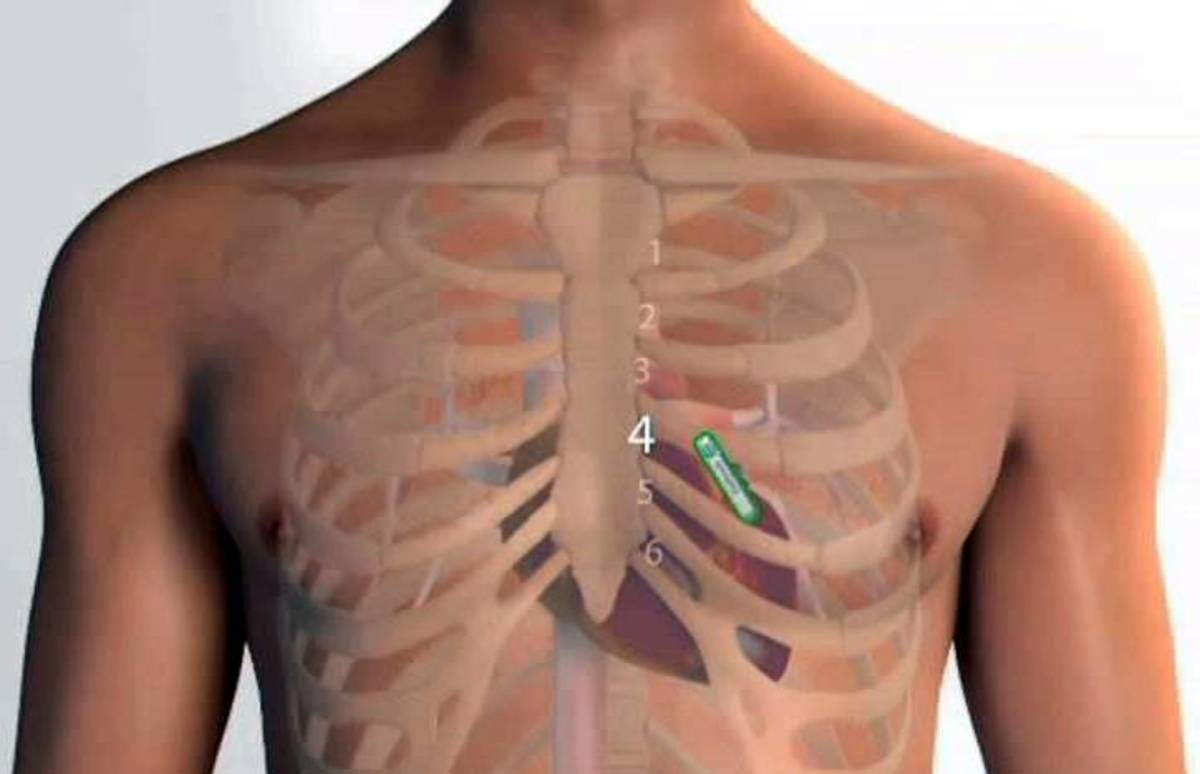

The contemporary research on cardiac RF telemetry systems for a murine heart monitoring, however, may be broadly grouped under the following four themes: Conductance catheter modelĪccurate modelling of the relationship between the blood conductance and the beating heart’s volume is a very complex problem, which forces the researchers to rely on onerous use of numerical tools to develop practical working models. A “radio pill” first reported in, over the time, has evolved into a fully functional “video pill” that is now almost routinely used to monitor pH, temperature, and the human digestive system from the inside. RF telemetry has already become an indispensable tool in clinical applications.
:max_bytes(150000):strip_icc()/chest-x-ray-showing-an-implanted-pacemaker-1131216226-87b3fdb8c63a4100b1efc35c2b4abf5e.jpg)

However, the small size of a mouse body still presents great challenge if the supporting electronics and antenna are to be encompassed as well. Today, these two types of sensors are commercially available as a single-package dual-sensor device that is small enough to be implanted into a mouse heart. followed by reporting the development of a catheter with the embedded conductance-based V sensor. To that end, one of the first micromachined (MEMS) type of P sensors suitable for blood pressure monitoring was reported in, and soon after Baan et al. Therefore, it is essential to collect simultaneous data related to both blood pressure ( P) and volume ( V) of a heart on a beat-to-beat basis. it is capable of generating a large stroke volume (SV) versus a failing heart that is capable of generating much smaller SV (Figure 1). Similarly to piston in a car engine, a heart is described by PV loops, where a heart of a healthy person is capable of closing a PV loop with large surface, i.e. In order to evaluate a heart’s functionality, cardiovascular researchers rely mostly on the shape and position of the heart’s pressure–volume (PV) loops, with genetically engineered small animal subjects, such as mice, rats, and rabbits being the most important models used for researching diseases. in 2008 cardiovascular diseases accounted for 29% of all deaths in Canada. Consequently, significant portion of the research efforts is directed towards the development of low-volume and -power electronics, as well as RF energy harvesting systems that are required to serve as the energy source to the implanted telemetry instead of the relatively very bulky batteries.Ĭongestive heart failure (CHF), a condition in which the heart fails to pump efficiently, is identified as one of the major cardiovascular diseases e.g. However, if the complete system is to be fully implanted and the subject allowed to freely move inside a cage, the mouse’s small body size sets harsh constrains on the size and power consumption of the required electronics.

These commercially available devices are already small enough to fit inside a left-ventricle of a mouse heart. This article presents the state of the art review of experimental cardiac monitoring telemetry systems, with strong accent on the systems designed to work with a dual pressure–volume conductance-based catheter sensor. Research and development of implantable RF telemetry systems intended specifically to enable and support cardiac monitoring of genetically engineered small animal subjects, rats and mice in particular, has already gained significant momentum.


 0 kommentar(er)
0 kommentar(er)
